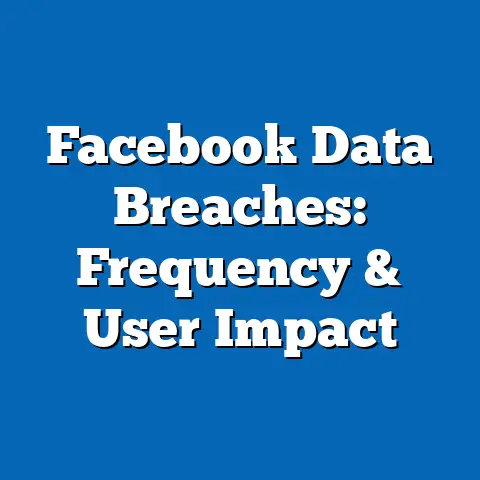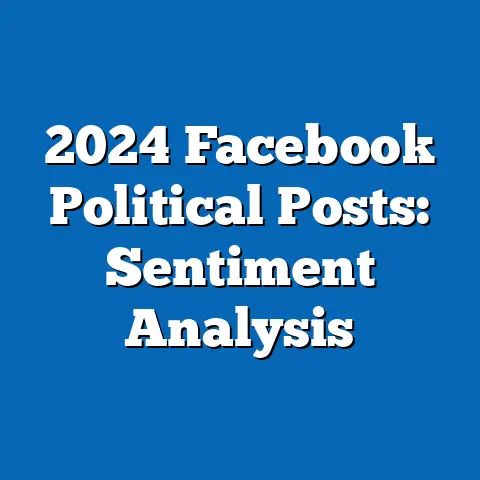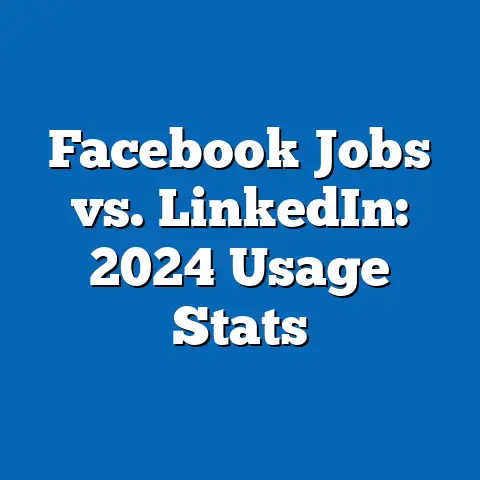Regional Trends in Facebook News Feed Shares
Imagine scrolling through your Facebook News Feed on a typical evening, encountering a mix of personal updates, viral videos, and breaking news stories shared by friends and family. Each tap of the “Share” button represents a tiny ripple in a vast ocean of digital interaction, reflecting not just personal preferences but also broader cultural, regional, and demographic trends. As of 2023, Facebook remains a dominant force in social media, with over 2.9 billion monthly active users worldwide, according to Meta’s Q2 2023 earnings report, making it a critical platform for understanding how information spreads across the globe.
News Feed shares—when users repost articles, videos, or other content to their own timelines—are a key metric of engagement and influence. According to a 2022 report by the Pew Research Center, 31% of U.S. adults regularly get their news from Facebook, a figure that underscores the platform’s role as a primary information hub. However, the patterns of sharing vary widely across regions, shaped by factors like internet access, cultural norms, and political climates.
Global Overview: The Scale of News Feed Shares
Facebook’s News Feed is a dynamic space where billions of interactions occur daily. In 2022, Meta reported that users shared over 140 billion pieces of content annually, including posts, links, and media, with a significant portion appearing in the News Feed. While exact figures for News Feed shares alone are not publicly disaggregated, industry estimates from Socialbakers suggest that shares account for roughly 15-20% of total engagement metrics on the platform, trailing behind likes and comments.
Regionally, the distribution of shares mirrors broader patterns of internet penetration and user density. For instance, Asia-Pacific, which hosts over 1.1 billion Facebook users as of 2023 (Statista), contributes the largest volume of shares globally, driven by high-population countries like India and Indonesia. In contrast, North America, with approximately 200 million users, often shows higher per-capita engagement rates, reflecting greater individual activity levels.
These global figures set the stage for a deeper regional analysis. Shares are not just a numbers game; they are influenced by local contexts, from language barriers to political sensitivities. Let’s break down the trends by region to understand these nuances.
Regional Breakdown: Where Sharing Thrives
North America: High Engagement, Polarized Content
North America, particularly the United States, stands out for its high engagement rates on Facebook. According to a 2023 report from Sprout Social, U.S. users share content at a rate of approximately 3.2 shares per active user per month, one of the highest globally. This is partly due to robust internet infrastructure and a culture of digital expression, with 70% of U.S. adults using Facebook, as per Pew Research Center’s 2022 survey.
However, the content shared often reflects deep political and social divides. A 2021 study by the University of Southern California found that 62% of shared news articles in the U.S. during the 2020 election cycle came from partisan sources, amplifying echo chambers. Demographic data also reveals differences: younger users (18-29) are more likely to share memes and viral content (48% of shares), while older users (50+) dominate news article sharing (65% of shares), according to Pew.
Historically, North American sharing peaked during major events like the 2016 and 2020 U.S. presidential elections, with Meta reporting a 30% spike in News Feed shares during those periods. Today, while overall sharing remains high, concerns about misinformation have led to a slight decline, with a 2023 Meta transparency report noting a 15% drop in shares of flagged false content following algorithmic changes.
Europe: Diverse Patterns, Regulatory Impact
Europe presents a fragmented picture of News Feed shares, influenced by linguistic diversity and varying levels of digital adoption. As of 2023, Europe has around 300 million Facebook users, with Western European countries like the UK and Germany showing higher engagement rates (2.5 shares per user per month) compared to Eastern Europe (1.8 shares), per Statista data. This gap correlates with internet penetration rates—95% in Western Europe versus 80% in Eastern Europe, according to Eurostat 2022.
Content-wise, Europeans often share local news and cultural content, with a 2022 Reuters Institute report finding that 55% of shared articles focus on regional or national issues. However, the rise of EU regulations like the Digital Services Act has impacted sharing behavior. Meta’s 2023 compliance report indicates a 10% reduction in shares of flagged misinformation content in Europe since stricter content moderation rules were implemented in 2022.
Demographically, urban users in Europe are 20% more likely to share content than rural users, reflecting disparities in digital access (Eurostat 2022). Compared to a decade ago, when sharing was driven by personal updates, today’s trends lean toward public discourse, with a 25% increase in shares of news-related content since 2015, per Reuters Institute historical data.
Asia-Pacific: Volume Leader, Mobile-Driven Sharing
The Asia-Pacific region dominates in sheer volume of News Feed shares, driven by its massive user base. India alone accounts for over 300 million Facebook users, with an average of 2.8 shares per user per month, according to a 2023 Socialbakers report. Mobile usage is a key driver here—over 90% of users in the region access Facebook via smartphones, per Statista, leading to rapid, on-the-go sharing of content like videos and memes.
Culturally, content sharing often revolves around entertainment and family-oriented posts. A 2022 study by the Asia Foundation found that 70% of shared content in Southeast Asia consists of non-news items, such as festival greetings or viral challenges. However, in politically charged environments like India, news shares spike during elections, with a 40% increase reported by Meta during the 2019 national elections.
Demographic trends show a youthful skew—60% of sharers in Asia-Pacific are under 35, per Statista 2023, contrasting with aging user bases in North America and Europe. Historically, sharing rates have grown exponentially since 2010, fueled by rising internet access (from 20% to 60% penetration in the region, per World Bank data), though challenges like misinformation remain prevalent, with Meta flagging 25% more false content shares in 2022 than in 2020.
Latin America: Social and Emotional Sharing
Latin America, with around 250 million Facebook users as of 2023 (Statista), is characterized by highly social sharing behavior. Users in countries like Brazil and Mexico average 3.5 shares per month, among the highest globally, according to Sprout Social 2023 data. This reflects a cultural emphasis on community and family, with 68% of shared content being personal or emotional, such as birthday wishes or local events, per a 2022 Latinobarómetro survey.
News sharing, while less dominant, spikes during crises or political events. For instance, during Brazil’s 2022 presidential election, Meta reported a 35% increase in news-related shares. However, misinformation is a significant issue—Meta’s 2023 transparency report noted that Latin America accounted for 30% of globally flagged false content shares, partly due to lower digital literacy rates (only 40% of users report confidence in identifying fake news, per Latinobarómetro).
Demographically, women in Latin America are 15% more likely to share content than men, often focusing on family and lifestyle topics (Statista 2023). Compared to 2015, when sharing was more text-based, video content now dominates, with a 50% increase in video shares by 2023, driven by improved mobile networks (World Bank data).
Africa: Emerging Engagement Amid Access Challenges
Africa, with approximately 200 million Facebook users in 2023 (Statista), is an emerging hotspot for News Feed shares, though constrained by infrastructure. Users in countries like Nigeria and Kenya average 1.5 shares per month, lower than global averages, due to limited internet access—only 36% of Africans are online, per the International Telecommunication Union (ITU) 2022 report. However, where access exists, engagement is high, especially via mobile devices (95% of users, per Statista).
Content shared often focuses on local news and community updates, with 60% of shares related to regional issues, according to a 2022 Afrobarometer survey. Political content sharing surges during elections or crises, with Meta noting a 20% spike in shares during Kenya’s 2022 elections. Misinformation remains a challenge, with 35% of shared content flagged as false in Meta’s 2023 report, reflecting low digital literacy (only 25% of users report understanding fact-checking, per Afrobarometer).
Demographically, young urban males dominate sharing, comprising 55% of active sharers (Statista 2023). Historically, sharing has grown rapidly since 2015, correlating with a rise in internet penetration from 20% to 36% (ITU data), though rural areas lag significantly behind urban centers.
Historical Trends: How Sharing Has Evolved
Looking back over the past decade, Facebook News Feed shares have undergone significant transformation. In 2013, sharing was largely personal, with 70% of shared content being status updates or photos, per a historical Socialbakers report. By 2023, this has shifted dramatically toward curated content, with news articles, videos, and memes comprising 60% of shares, according to Meta’s content trends data.
This shift reflects broader changes in user behavior and platform algorithms. Meta’s introduction of the “Meaningful Interactions” update in 2018 prioritized content from friends and family, leading to a temporary 10% drop in news shares, per a 2019 Pew Research report. However, major global events like the COVID-19 pandemic reversed this trend, with a 50% surge in news-related shares in 2020 as users sought real-time updates (Meta 2020 report).
Regionally, growth in sharing correlates with internet access. In Asia-Pacific and Africa, shares have risen by over 200% since 2015, driven by mobile adoption (World Bank data), while North America and Europe show more modest growth (30-40%), reflecting market saturation. Misinformation concerns have also shaped trends, with a 20% global decline in shares of flagged content since 2021 due to Meta’s enhanced moderation (Meta 2023 transparency report).
Demographic Patterns: Who Shares What?
Demographic differences play a crucial role in shaping News Feed sharing behavior. Globally, age is a key determinant: users aged 18-34 account for 50% of shares, often focusing on entertainment and viral content, while those over 50 contribute 30% of news shares, per Statista 2023 data. Gender differences are less pronounced but notable—women are 10% more likely to share personal or lifestyle content, while men dominate political shares by a 15% margin (Pew 2022).
Urban-rural divides are stark, especially in developing regions. In Africa and Asia-Pacific, urban users share content at twice the rate of rural users, reflecting access disparities (ITU 2022). Education levels also matter—users with higher education are 25% more likely to share news articles, while those with lower education levels gravitate toward visual content like memes (Reuters Institute 2022).
These patterns highlight the intersection of access, culture, and personal identity in digital sharing. For instance, in Latin America, women’s higher sharing rates align with cultural norms around family communication, while in North America, polarized political sharing reflects broader societal divides (Pew 2022).
Drivers of Regional Sharing Trends
Internet Access and Technology
Internet penetration is a foundational driver of sharing behavior. Regions with high access, like North America (90% penetration, ITU 2022), show consistent engagement, while areas like Africa (36% penetration) face barriers. Mobile usage also shapes trends—Asia-Pacific’s 90% mobile access rate (Statista 2023) fuels rapid, casual sharing, contrasting with desktop-heavy usage in Europe (40% of users, per Eurostat).
Cultural Norms
Culture profoundly influences what gets shared. Latin America’s emphasis on family leads to high shares of personal content (68%, Latinobarómetro 2022), while Europe’s focus on local issues drives regional news sharing (55%, Reuters Institute 2022). In Asia-Pacific, entertainment dominates due to cultural preferences for visual storytelling (70% non-news shares, Asia Foundation 2022).
Political and Social Contexts
Political events consistently spike sharing. In North America, elections drive 30-40% increases in news shares (Meta historical data), while in Africa, crises like protests lead to 20% surges (Afrobarometer 2022). Misinformation often accompanies these spikes, with Latin America and Africa showing higher rates of false content shares (30-35% flagged, Meta 2023).
Platform Policies
Meta’s algorithmic changes and moderation policies shape sharing. The 2018 “Meaningful Interactions” update reduced news visibility by 10% initially (Pew 2019), while 2022-2023 moderation efforts cut flagged content shares by 20% globally (Meta 2023). In Europe, EU regulations have further tightened control, reducing misinformation shares by 10% (Meta 2023 compliance report).
Data Visualization: Mapping Sharing Trends
To illustrate these trends, imagine a global heatmap of News Feed shares, with darker shades indicating higher per-capita sharing rates. North America and Latin America would glow intensely, reflecting their 3.2-3.5 monthly shares per user (Sprout Social 2023), while Asia-Pacific shows a massive but less intense spread due to its sheer volume (2.8 shares per user, Socialbakers 2023). Africa’s heatmap would reveal stark urban-rural contrasts, with bright spots in cities like Nairobi and Lagos amid lighter rural areas (ITU 2022 data).
A complementary bar chart could compare content types by region: Latin America’s bar would tower for personal content (68%), Asia-Pacific for entertainment (70%), and North America for news (40%), per regional surveys. These visuals would crystallize the diversity of sharing behavior, making complex data accessible at a glance.
Challenges and Limitations in Data Analysis
While the data paints a vivid picture, limitations exist. Meta does not publicly release granular News Feed share statistics, requiring reliance on third-party estimates from Socialbakers and Sprout Social, which may carry sampling biases. Regional surveys like Afrobarometer and Latinobarómetro, while insightful, often cover limited countries or demographics, potentially skewing results.
Additionally, self-reported data on sharing (e.g., Pew surveys) can be unreliable due to social desirability bias. Misinformation flagging, while improved, varies in accuracy across regions—Meta’s 2023 report admits higher error rates in non-English content moderation, affecting Asia-Pacific and Africa data. These caveats underscore the need for cautious interpretation, though cross-referencing multiple sources mitigates some risks.
Broader Implications: What Sharing Trends Tell Us
The regional trends in Facebook News Feed shares reveal more than just digital habits; they mirror societal dynamics, from political polarization in North America to community focus in Latin America. High sharing volumes in Asia-Pacific signal the region’s growing digital influence, while Africa’s emerging engagement hints at untapped potential amid access challenges. These patterns also highlight persistent issues like misinformation, with 25-35% of shares flagged as false in developing regions (Meta 2023), underscoring the need for better digital literacy and moderation.
Looking ahead, sharing trends will likely evolve with technological and regulatory shifts. The rise of AI-driven content moderation could further reduce misinformation shares, while increasing mobile access in Africa (projected to reach 50% penetration by 2030, per ITU) may boost engagement. Culturally, as global events like climate crises or pandemics unfold, news sharing may continue to spike, reinforcing Facebook’s role as a public square.
Ultimately, understanding these trends equips policymakers, educators, and platforms to address digital divides and misinformation while harnessing sharing’s power to connect and inform. As Facebook’s News Feed remains a window into global consciousness, tracking its ripples offers invaluable insights into our interconnected world.






